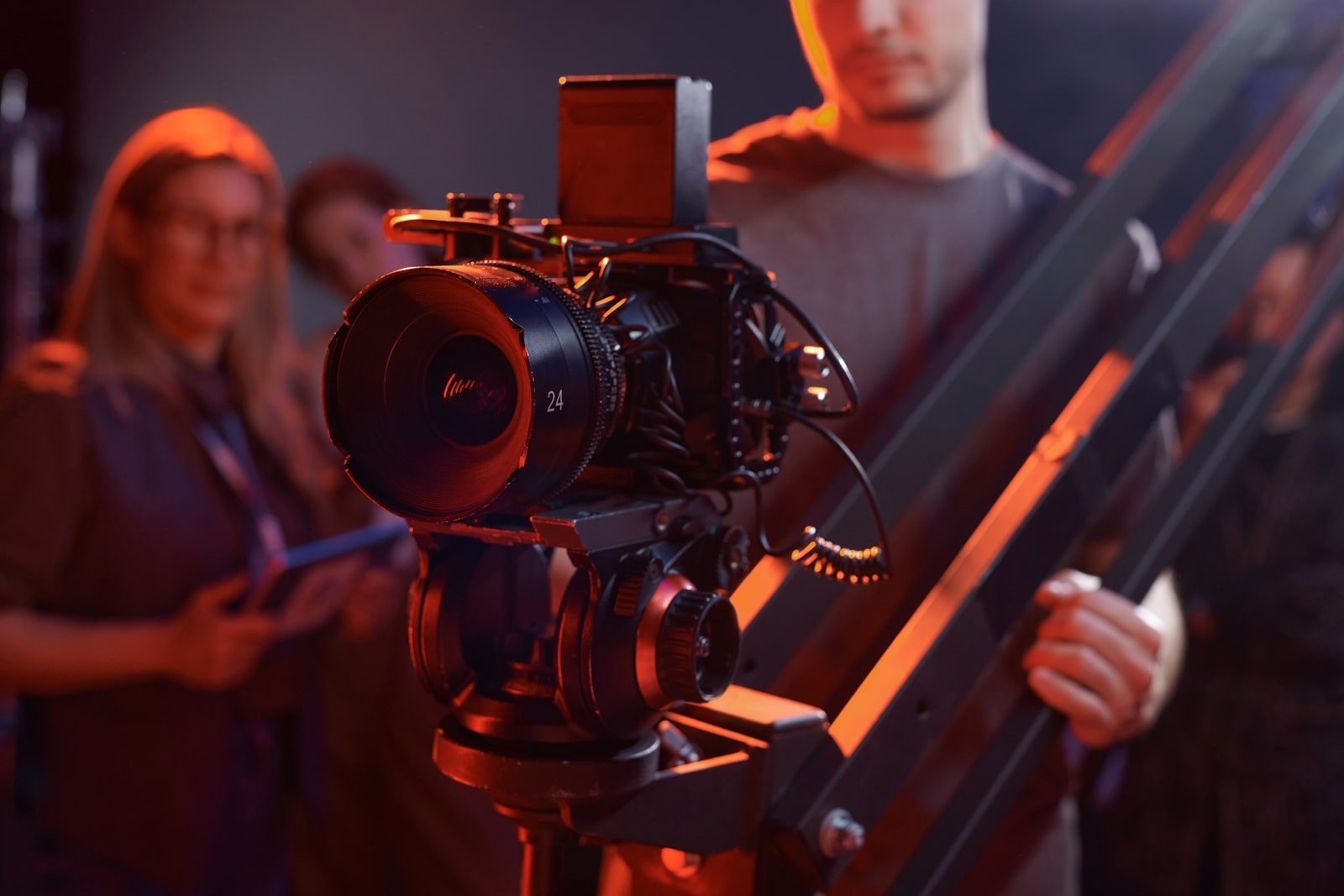
Cinema Cameras vs Mirrorless for Commercial Shoots
For video production firms, camera choice is a decision that affects not only visual outcomes but also brand image, crew workflow, and budget allocation. With commercial shoots demanding fast turnaround and exceptional quality, understanding the strengths and trade-offs of cinema and mirrorless cameras ensures productions are delivered efficiently and at the highest standard.
Sensor Size and Image Quality
Sensor size determines how your visuals appear in depth, noise levels, and overall cinematic feel. Cinema cameras with Super 35 or full-frame sensors offer creamy bokeh, strong subject isolation, and excellent low-light performance, which are crucial when crafting high-impact visuals for television adverts and branded content. Their larger pixels gather more light, producing cleaner images in challenging conditions without sacrificing sharpness or colour fidelity.
Mirrorless cameras, with full-frame or APS-C sensors, have advanced significantly. Many now produce images nearly indistinguishable from cinema cameras in controlled lighting scenarios. For video production firms working on corporate interviews, explainer videos, and social media content, mirrorless bodies offer a practical balance between cinematic aesthetics and streamlined setup, especially when shoots are frequent and require minimal lighting gear.
Dynamic Range Comparison
Dynamic range reflects a camera’s ability to retain detail in both highlights and shadows, which is essential for commercial shoots with contrast-heavy scenes, such as window-lit offices or bright outdoor interviews. Cinema cameras often achieve up to 17 stops of dynamic range, preserving subtle textures and preventing harsh highlight clipping, which allows colourists extensive flexibility in post-production for brand-compliant grading.
Mirrorless systems have improved to deliver dynamic ranges of approximately 14–15 stops, suitable for most standard commercial projects. For video production firms, this range is often sufficient to create clean, punchy visuals without extensive lighting modification, reducing crew needs and speeding up delivery timelines while keeping quality competitive.
Ergonomics and Rigging
Cinema cameras are engineered with professional workflows in mind, featuring robust build quality, internal ND filters, multiple mounting points, and XLR audio inputs integrated into the body. They are ready to slot seamlessly into studio rigs, stabilisers, or dolly systems with minimal modification. For video production firms handling large-scale productions or multi-camera shoots, these ergonomic considerations significantly streamline operations on set.
Mirrorless cameras are lighter and more compact, ideal for handheld, gimbal, and drone shoots. However, they often require cages, baseplates, and accessory mounts to integrate professional audio, power, or focus control. For firms focused on agile shoots, this flexibility and minimal weight make mirrorless systems highly attractive, especially when shooting on location or travelling light.
Recording Formats and Codecs
Cinema cameras typically offer internal recording formats like ProRes RAW, ARRIRAW, or REDCODE RAW, giving editors immense latitude in post-production, especially for visual effects-heavy or broadcast-grade projects. Such formats preserve maximum colour data and are essential for creating polished, brand-aligned visuals required by agencies and large corporations.
Mirrorless systems increasingly record 10-bit 4:2:2 internally and offer RAW output via HDMI to external recorders. These formats provide ample grading flexibility while keeping file sizes manageable, reducing storage costs for video production firms working on high-volume content pipelines. The simplicity of mirrorless codec options is advantageous when turnaround times are tight, or projects require rapid online distribution.
Autofocus Capabilities
Mirrorless cameras now offer state-of-the-art autofocus with eye tracking, facial recognition, and AI subject detection, making them invaluable for corporate interviews, event coverage, and dynamic run-and-gun shoots. These systems ensure consistently sharp results, even when operated by smaller crews or in unpredictable environments.
Cinema cameras, by contrast, prioritise manual focus control, supporting focus pullers on large productions to achieve complex rack focuses and cinematic movements. While manual focus remains king for narrative storytelling, video production firms often benefit from mirrorless autofocus reliability when working on fast-paced corporate briefs where retakes are time-restrictive.
Lens Adaptability and Mounts
Cinema cameras generally use PL mounts to support dedicated cinema lenses, offering standardised gear placements for follow-focus systems and consistent optical performance across focal lengths. This consistency ensures footage matches seamlessly in post, a priority for firms producing commercials, documentaries, or branded films requiring meticulous grading and editing.
Mirrorless cameras have highly adaptable mounts, accommodating native and legacy lenses via adapters. For video production firms that cover diverse shoot types, from interviews to b-roll, this adaptability maximises creative options while optimising kit investment. Hybrid stills and video shooters particularly benefit from this flexibility, enabling photography and video capture within a single setup.
Battery Life and Power Solutions
Cinema cameras support large V-mount or Gold-mount batteries, providing hours of uninterrupted power ideal for extended interviews, multi-camera setups, and location shoots without immediate charging infrastructure. Built-in power distribution to accessories further simplifies cable management and rigging.
Mirrorless cameras use smaller proprietary batteries, which, while sufficient for short shoots, often require spares or USB power banks for long filming days. For video production firms managing multiple locations in a day or filming events without access to mains power, planning a robust battery strategy is essential to prevent downtime and maintain production continuity.
Client Perception and Professionalism
Equipment choice influences client perception. Cinema cameras convey high production value with their robust build, advanced rigs, and overall professional presence on set. For brands investing heavily in commercials or broadcast campaigns, this presentation often aligns with expectations of premium service delivery.
However, mirrorless systems’ compact design can benefit video production firms producing corporate videos or authentic interviews, where intimidating clients with large rigs can be counterproductive. The discretion of mirrorless bodies fosters a relaxed environment, enabling genuine, confident performances in front of the lens.
Use-Case Recommendations
Cinema cameras excel in broadcast advertisements, large-scale brand films, and productions involving extensive post-processing or VFX integration. They are optimal when projects demand the highest possible image quality and require a professional crew to manage complex rigs.
Mirrorless cameras, meanwhile, are ideal for corporate interviews, social media campaigns, documentaries, and event coverage where agility, fast setup, and strong autofocus performance outweigh the benefits of RAW workflows. For video production firms, building a hybrid kit of both systems maximises capability across diverse projects while ensuring budget remains sustainable.
Choosing between cinema cameras and mirrorless bodies is ultimately about aligning tools with project needs, crew size, and client expectations. Video production firms that invest time in practical testing and workflow planning will find an equipment mix that delivers consistent, brand-enhancing visuals while supporting operational efficiency and financial sustainability.
At Sound Idea Digital, we guide video production firms to choose equipment that elevates production value and ensures smooth workflows. Contact us today to explore how we can support your team with expert consultancy, crew training, and integrated solutions for outstanding video production.



